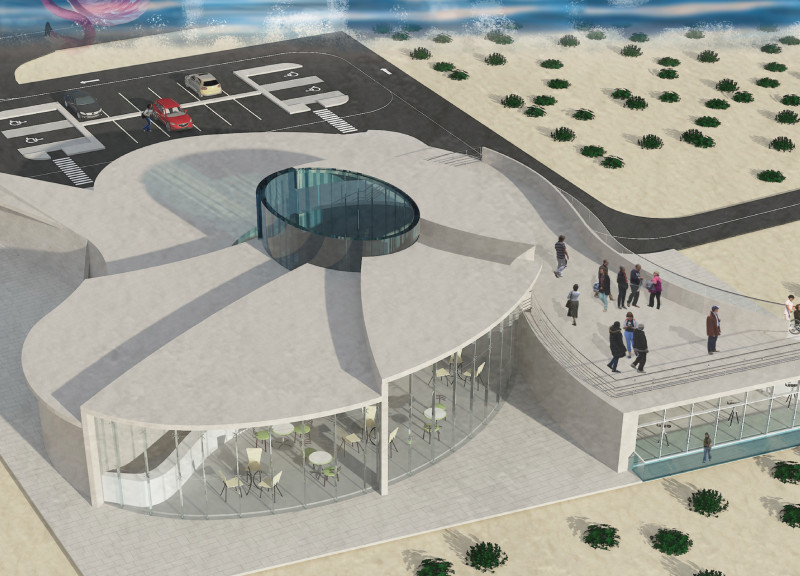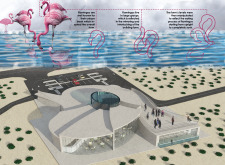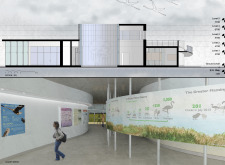5 key facts about this project
This project represents a synthesis of architecture and nature. It draws on the forms and behaviors of flamingos, encapsulating their social dynamics and movement patterns within the structure’s design. The architecture facilitates an immersive experience, aligning visitors with their environmental context.
Unique Design Approaches
The architectural plan utilizes a fluid and organic form that mimics the curvilinear shapes of flamingos. This design not only enhances visual interest but also guides the visitor experience, encouraging exploration through a series of interconnected spaces. The building's layout features multiple levels that offer different vantage points and interactions with the surrounding landscape. Large glass windows and open façades minimize barriers between the interior and the ecosystem, promoting transparency and natural light.
The project employs a range of materials, including reinforced concrete for structural elements, aluminum panels for cladding, and extensive use of glass to create an atmosphere of openness. This selection ensures durability while enhancing the aesthetic quality of the structure. The adaptability of spaces within the building allows for various educational programs and gathering amenities, making it a versatile addition to the area.
Sustainable Strategies
The design integrates biophilic principles, emphasizing the connection between occupants and the natural environment. Operable glass systems facilitate natural ventilation and climate control, reducing dependency on artificial heating and cooling systems. Native landscaping surrounds the facility, reinforcing local biodiversity and enhancing the overall ecological footprint. This approach not only serves the immediate functional needs but also advocates for long-term sustainability in architectural practices.
For those interested in exploring detailed architectural plans, sections, and design ideas, the project presentation offers comprehensive insights into the architectural strategies and thematic inspirations that drive this unique design.


























